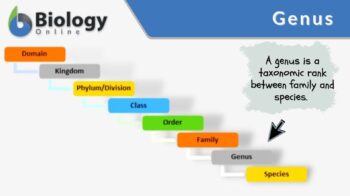
Genus
n., plural: genera
[ˈdʒiːnəs]
Definition: a taxonomic rank consisting of species with common attributes
Table of Contents
Genus Definition
A genus is a taxonomic category ranking used in biological classification that is below family and above species. Species exhibiting similar characteristics comprise a genus. An estimate of the number of published genus names was at about 510,000 as of 2016. (1) In 2018, the Catalogue of Life quoted 173,363 accepted genus names for both extant and extinct species.
Also included in their report are genus names with no species for certain groups. (2) In binomial nomenclature, the genus is used as the first word of a scientific name in which the first letter is capitalized. Together with the specific epithet, they are italicized, e.g., Homo sapiens, or underlined if handwritten, e.g., Homo sapiens.
A genus is a taxonomic rank comprised of species grouped based on shared attributes (having similar structures or distinct characteristics) or being phylogenetically related. It is one of the eight major taxonomic ranks in the biological classification of living things. It is below the family and above the species. A genus may be comprised of one or more species. Similarly, a family may consist of a single genus or more than one genera. Etymology: The term genus was borrowed from Latin. It means “birth”, descent, “origin”, “sort”, or “type”. The plural form is genera. Thus, the meaning of genera pertains to more than one genus as most taxonomic families are comprised of several genera. Synonym: generic name. Compare: family, species
Classification System
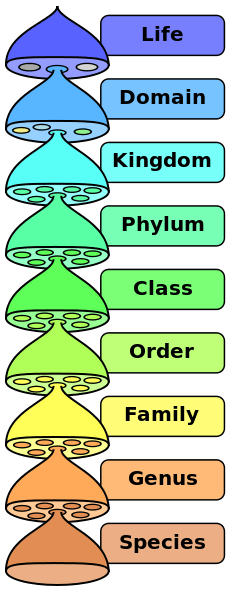
The Naming System
In binomial nomenclature, the genus is used as the first word of a scientific name. The genus name is always capitalized and italicized. For example, the binomial name of the lion is Panthera leo. The first part, Panthera, is the genus name whereas the second part, leo, is the specific epithet. A taxonomist (experts in taxonomy) assigns a scientific name for a particular species. In order for a genus to be descriptively useful, it must have monophyly, reasonable compactness, and distinctness.
Willi Hennig, a German biologist, defined monophyly as groups based on shared derived characteristics or traits that distinguish the group from other groups of organisms. As for reasonable compactness, it means that the genus needs not be expanded unnecessarily. The genus name must also show distinctness with respect to evolutionarily relevant criteria such as ecology, morphology, or biogeography.
In genus classification and naming, the Nomenclature Codes provide an archetypal standard. The binomial name is different from the common or vernacular name. The latter is non-standardized and varies by location as opposed to the former that is standardized and usage is globally accepted.
Genus vs. Species
A species is regarded as the most basic unit or category in the biological system of classification. To be considered into a species rank, the group must have at least two of its members capable of reproducing fertile offspring (such as by sexual reproduction). Organisms from different species, although they belong under the same genus, generally cannot interbreed as their offspring would likely be infertile. The species of a particular group of organisms would, therefore, pertain to those that can reproduce and sire fertile offspring of the same kind. Thus, they would have the same set of DNA, similar physical and morphological attributes, and demonstrate communal behavior.
The species is located below the genus rank. Thus, a genus is more encompassing and relatively wider in scope than a species. Nevertheless, the genus lies below the taxonomic family and therefore it would be less inclusive than a family since the latter serves as the collective umbrella of related genera.
Certain species can still be further subdivided into subgroups (called subspecies), such as varieties, formae, etc. The genus-species format is essential in naming an organism. The genus is the generic name whereas the species is the specific name in a binomial nomenclature. For example, Allium cepa (commonly known as onion). The Allium is the generic name whereas the cepa is the specific name.
Table 1: Difference between genus and species | |
|---|---|
| Genus | Species |
| Genus meaning: a taxonomic rank below family and above species | Species meaning: the fundamental unit in biological classification |
| Comprised of species with common features | Comprised of individuals that can interbreed and produce fertile offspring |
| More inclusive, as it is comprised of different species, and therefore consists of a larger number of organisms | Less inclusive and consisting of a fewer number of organisms |
| The first part of a binomial name | The second part of a binomial name |
| Genus example: Homo | Species example: H. sapiens |
Data summarized by Maria Victoria Gonzaga for Biology Online
Genus and Family
A taxonomic family is a group of one or more genera. The genera under a particular family share a common attribute. Thus, a family would usually be more inclusive and consists of a greater number of organisms. The genera of a particular family evolve from the same ancestors for having relatively common characteristics. In the taxonomic rank, a family is above the genus level and below the order.
Type Concept
In modern biological classification, the type genus serves as the representative of a taxonomic family. Thus, one or more genera in a family would define the latter. In zoology, the International Code of Zoological Nomenclature provides the fundamental standards. Accordingly, the family-group name would be based upon the type genus.
For example, the genus Cricetus (Leske, 1779) is the type genus of the family Cricetidae. Another example is the mallard Anas platyrhynchos. Anas is the type genus for the family Anatidae. Canis lupus (dogs and wolves) belongs to the family Canidae. The family name is derived from the generic name Canis.
The genus could serve as the root and the family name as the stem, with a name often ending in –idae. There are also instances wherein the next major taxonomic rank, particularly order, is based as well on the type genus. In dogs and wolves, for instance, belong to the order Carnivora. A family name should have a type genus just as a type genus has a type species. If a specimen turns out to be of another genus, then the generic name becomes a junior synonym.
Usage
In zoology, a genus may be available or unavailable. The available names are genus names that are published based upon the standards of the International Code of Zoological Nomenclature (ICZN), as well as by the International Commission on Zoological Nomenclature. The unavailable names were those that were not published because of nonconformity to the ICZN Code. Other possible reasons are incorrect spellings and lack of type species.
In botany, an available name is a validly published name whereas an unavailable name is an invalid name. A genus name that is invalid is given a label, nomen invalidum (nom. Inval.). A valid name in botany is labeled as the correct name or current name.
The genus name could change over time and be replaced with another. This happens when new information comes along. The formerly accepted name, as a result, becomes a synonym. For example, Physeter (Linnaeus, 1758) has the following synonyms: Catodon (Linnaeus, 1761), Cetus (Billberg, 1828), Meganeuron (Gray, 1865), Megistosaurus (Harlan, 1828), Phiseter (Bonnaterre, 1789), Physalus (Lacépède, 1804), Physeterus (Duméril, 1806), and Tursio (Fleming, 1822).(2)
A homonym in biological classification is a name that is associated with two different taxa. For example, the ambrosia beetle and the platypus had been given the generic name Platypus. Nevertheless, the ambrosia beetle was the first to get a generic name Platypus and thus the platypus eventually was given a new generic name Ornithorhynchus. The two cannot share the same generic name since they are both from Kingdom Animalia. However, the use of the same genera for specimens from different kingdoms is still discouraged.
There are thousands of cases wherein species from different kingdoms share with the same genera. For example, Aoutus is the generic name for the night monkeys and also for the golden peas.
Examples
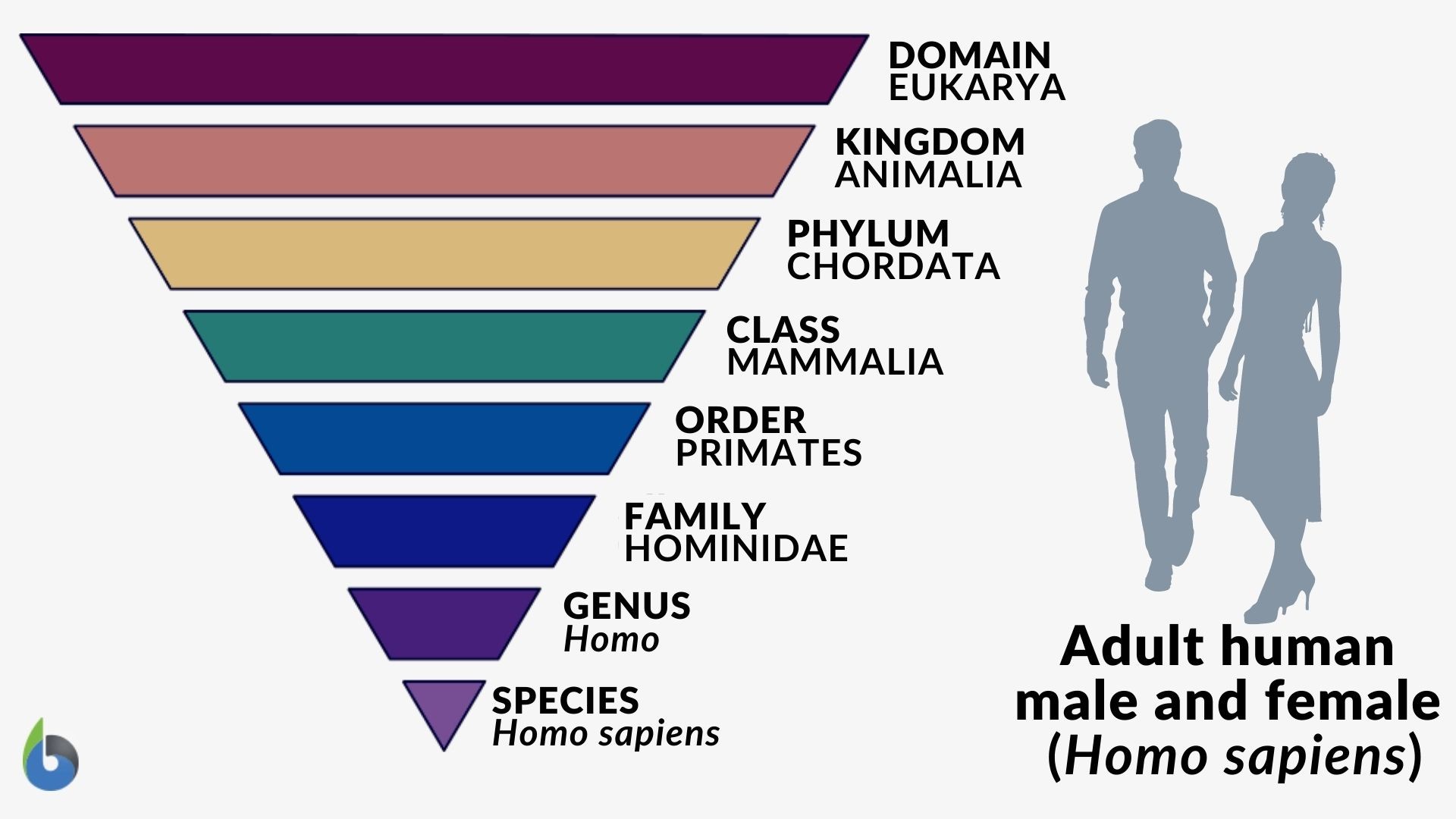
Homo (from Latin that literally means “man”) is a genus of humans that belong to the tribe Hominini of the family Hominidae, order Primates, class Mammalia. The fundamental features of the human species in the genus Homo are bipedalism, opposable thumb, possession of a notochord that is eventually replaced by a vertebral column, live birth, and mammary glands producing breast milk in women to nourish the newly born. In this genus example, several species are included. However, only one species remain extant, i.e. H. sapiens sapiens (modern). Below is the genus list of human species (genus Homo).
- H. habilis
- H. rudolfensis
- H. gautengensis
- H. erectus
- H. ergaster
- H. antecessor
- H. heidelbergensis
- H. cepranensis
- H. rhodesiensis
- H. naledi
- H. neanderthalensis
- H. floresiensis
- H. tsaichangensis
- Denisova hominin
- Red Deer Cave people
- H. s. sapiens (modern)
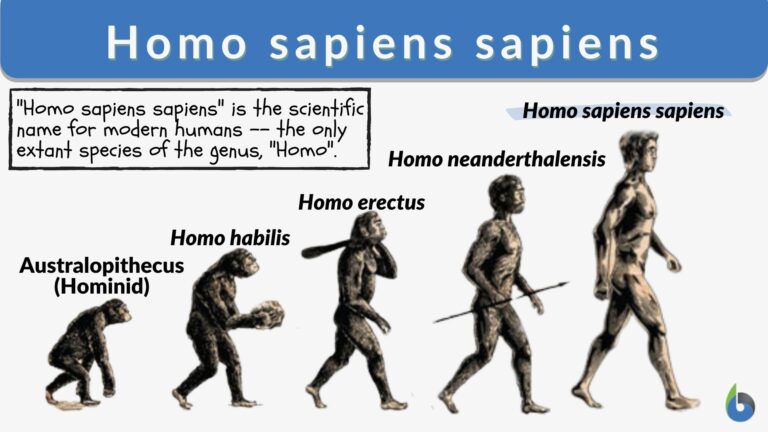
These species possess a highly developed brain and advanced skills, particularly in abstract reasoning, problem-solving, self-awareness, and articulate communication. They walk on two legs, with an erect carriage. They have relatively smaller teeth than other primates. These features set them apart from other genera, such as Australopithecus.
The genus Australopithecus also belongs to the tribe Hominini. Their brains were smaller, about 35% of the brain size of modern humans. They generally had smaller built than humans and were shorter (about 3’11 to 4’7). They were more morphologically similar to chimpanzees and bonobos than to humans since their bodies are fully covered with hair. Astralopithecus, though, play a part in human evolution.
The genus Homo is presumed to originate from one of the species of this genus million years ago.(4) Ardipithecus is another genus belonging to family Hominidae. Members of this genus were already extinct. They diverged from the chimpanzees. They have a grasping hallux or big toe that enabled them to move from one tree to another with relative ease. This genus as the earliest human ancestor is a matter of debate though since they likely behave more like a chimpanzee than humans. Sahelanthropus is a genus comprised of extinct species from the Miocene epoch, particularly during the time close to that when chimpanzees and humans diverged.
Subgenus
Below genus is the taxon subgenus. It is used by taxonomists often due to the following reasons:
- Highly diverse generic group, especially when the genus has numerous species resulting in substantial variation such as in morphology, behavior, and genetics
- For indicating evolutionary relationship, especially when within the genus there are distinctive patterns of evolutionary divergence from one clade to another
- Significant ecological or geographic variation, paticularly when within the genus there are notable geographic or ecological differences that play a substantial role in speciation
- Identification of conservation priorities, si as to focus conservation efforts on a particular subgenus, especially one containing multiple endangered or threatened species.
Examples:
- Pan (Pan) for the common chimpanzee vs. Pan (Paniscus) for the bonobo
- Felis (Felis) catus for the domestic cat vs. Felis (Silvestris) lybica for the African wildcat
- Genera: Rosa subgenus Rosa for the true roses and Rosa subgenus Caninae for the dog roses
- Musa subg. Eumusa that includes most edible banana species vs. Musa subg.(Rhodochlamys) that includes some wild banana species
Usage:
» Subgenus is not mandatory when naming a species
» The International Code of Zoological Nomenclature recommends enclosing the subgeneic name in parentheses between the generic name and the specific epithet (see above for samples)
» The International Code of Nomenclature for algae, fungi, and plants recommends adding connecting term, which may be abbreviated to subg., not written in italics (see above for samples)
NOTE IT!
Taxonomy is dynamic!
The taxonomic ranking, classification, and identification can change over time particularly when new data and insights become available. A species belonging to a particular genus may later on be renamed and reclassified under a new genus. For example, the scientific name of the giant panda changed from Ursus melanoleucus to Ailuropoda melanoleuca after having found out that the giant panda is not as closely related to other bears as previously thought.
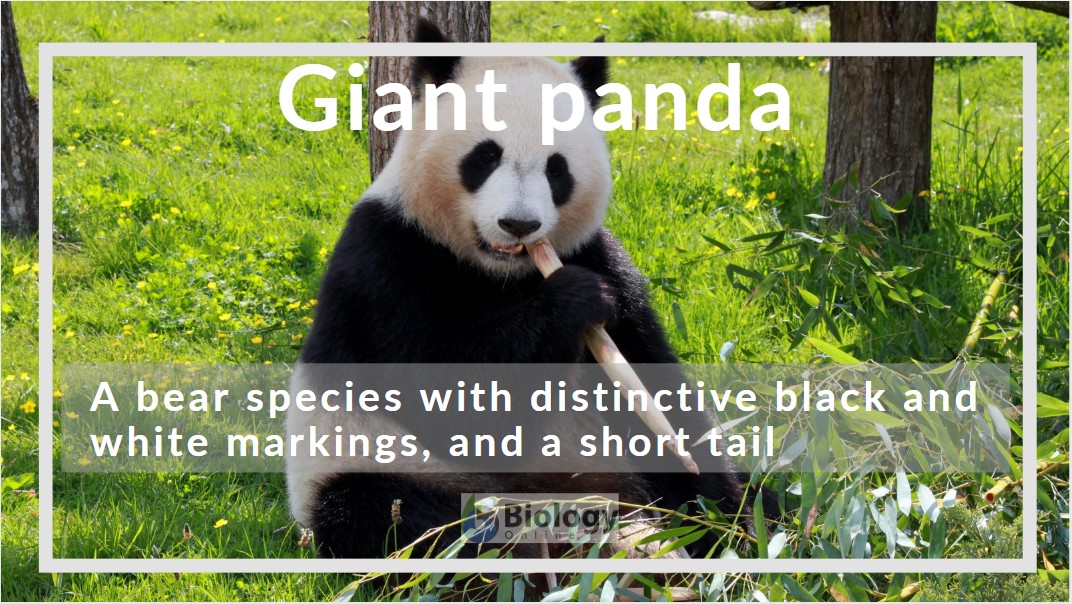
Take the Genus – Biology Quiz!
Further Reading
References
- Rees, T., Vandepitte, L., Decock, W., and Vanhoorne, B. (2017). “IRMNG 2006–2016: 10 Years of a Global Taxonomic Database” (PDF). Biodiversity Informatics. 12: 1–44.
- Catalogue of Life – 2018 Annual Checklist : 2018 Annual Checklist. (2018). Retrieved from Catalogueoflife.org website: http://www.catalogueoflife.org/annual-checklist/2018/info/ac
- WoRMS – World Register of Marine Species – Physeter Linnaeus, 1758. (2019). Retrieved from Marinespecies.org website: http://www.marinespecies.org/aphia.php?p=taxdetails&id=137032
- Toth, N. and Schick, K. (2005). “African Origins” in The Human Past: World Prehistory and the Development of Human Societies (Editor: Chris Scarre). London: Thames and Hudson. Page 60.
- AVH – Links to this species on other web servers. (2010). Retrieved from Anbg.gov.au website: http://www.anbg.gov.au/chah/avh/help/names/index.html
- What Is a Genus: Common Trees of the Pacific Northwest. (2019). Retrieved from Oregonstate.edu website: https://oregonstate.edu/trees/genus_describe.html
- Required Taxa – Humans. (2019). Retrieved from Ncsu.edu website: https://projects.ncsu.edu/cals/course/zo150/mozley/humans.html
- Classification of Living Things: Principles of Classification. (2012). Retrieved Palomar.edu website: https://www2.palomar.edu/anthro/animal/animal_2.htm
© Biology Online. Content provided and moderated by Biology Online Editors








